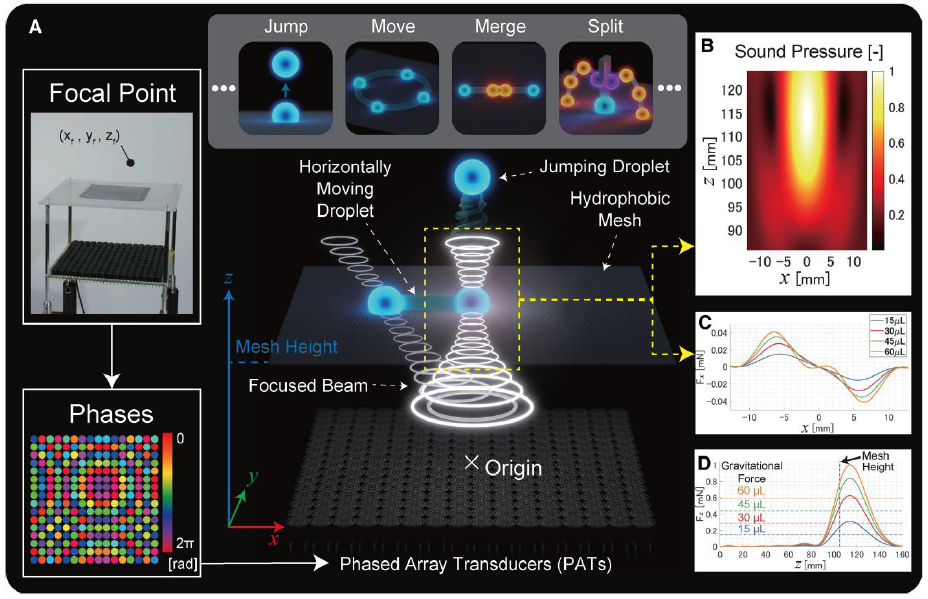When trying to automate and accelerate scientific experiments, there are cases where small amounts (droplets) of liquid in the picoliter to microliter range need to be manipulated. For moving droplets to a distant platform or container for the next stage of the process, it becomes necessary to cause the droplets to jump. However, the maximum jump height using digital microfluidic technology that operates on a flat surface was limited to about 5 mm.
ICReDD associate Professor Yuuya Nagata collaborated with a team from the University of Tsukuba on a study developing a new microfluidic platform that utilizes the remote force of ultrasound (acoustic radiation force) to manipulate droplets. By using a mesh treated with water-repellent, droplets can be supported while allowing the ultrasound to pass through. It was found that droplets can be attracted to areas of high sound pressure, even in mid-air, enabling the manipulation of droplets on the mesh using an ultrasonic beam.
Using this method, a maximum droplet jump height of 128 mm was achieved, marking a significant advancement. Since the jumping direction can also be controlled, it is possible to move droplets to adjacent devices or different stages. In addition to jumping, this method is able to horizontally move multiple droplets, as well as merge or split droplets. Using this merging functionality the platform was used to conduct a Suzuki-Miyaura cross-coupling reaction, demonstrating its suitability for chemical experiments. The system also demonstrated lower biofouling than the conventional system, showing its applicability to biological experiments.
The results of this research are expected to contribute to the development of technologies such as three-dimensional displays and automated experimental systems.


